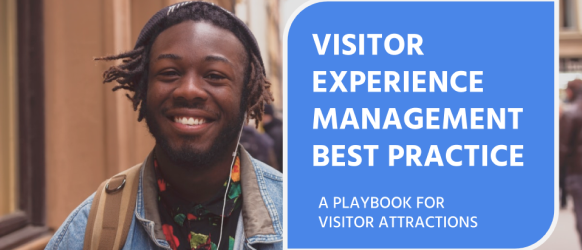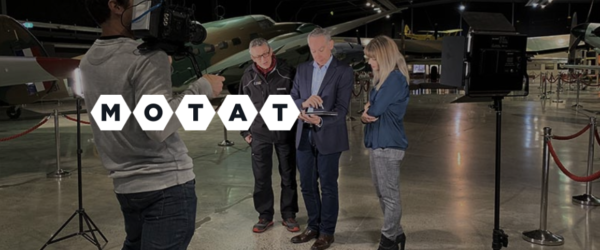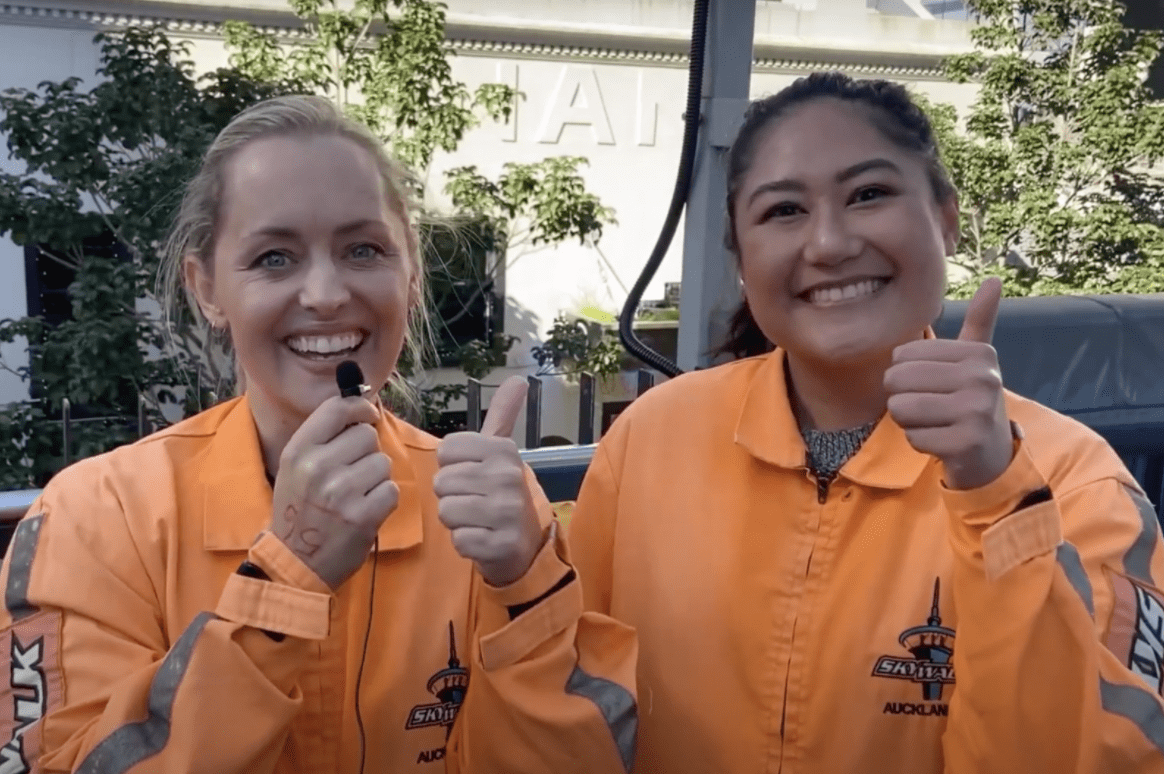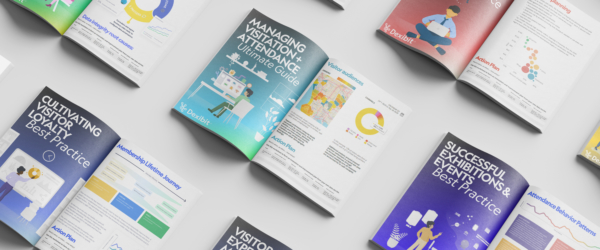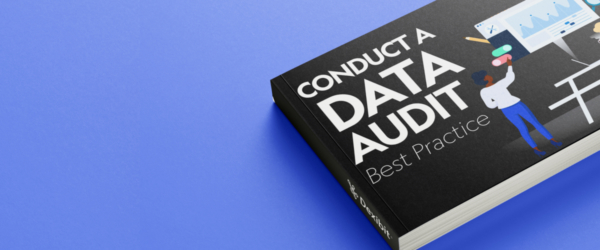Reflections on reopening and visiting attractions
- In COVID
- Articles
- 5 min read
Written by Angie Judge, Chief Executive, Dexibit.
It’s been three weeks today since New Zealand began reopening and I’m still getting used to it. Fingers crossed, within another week we might be all the way into the new normal – we’re grateful for a fortunate position that we’ve stopped seeing new cases and only have one active patient left. It will mean an end to controls like physical distancing and capacity constraints, with one very notable exception: given our borders are closed for the foreseeable future, apart from the 50,000 tourists ‘stuck’ here over lockdown, we won’t be seeing any more for a long while yet. Instead, the Government is asking us kiwis to ‘Do something new New Zealand’. And waiting for the day Australia might join our bubble.
Angie (Chief Executive, Dexibit) and Cece (Marketing Director, Dexibit), hosts of #ReopenRun after their Sky Tower jump
Going into lockdown happened so fast it left me feeling like my head was spinning – but in contrast, reopening is a slow process. Which is just as well, because after the relative quiet of lockdown, it has been an adjustment coming back. We were all eager to get out, but I found it hard to swap the stillness of lockdown for the buzz of being in public – it’s amazing to be out, yet it takes a lot of energy to be hyper aware of others around you and vigilant about hygiene all while trying to navigate keeping distance. When we spoke a few weeks back, Kirstin Paisley, Director at Auckland Art Gallery mentioned her team had gently approached coming back into the office to ease what could be an anxious adjustment for many – the same worked for us at Dexibit too, with staff initially doing a few hours at a time, half days, then a split week as we eased back into office life.
Before the country reopened, people pondered whether we’d see pent up demand in our visitor attractions, overwhelmed public transport, bad traffic… none of which eventuated. Though there’s been capacity limits in place for many visitor attractions with our current Alert Level rules, they haven’t often been hit, yet – while hairdressers enjoyed queues outside, it’s taken a few weeks for the public to start coming back in numbers to cultural institutions. Just about every leader at the various attractions we visited told us it was a blessing in disguise – with their visitor teams all learning a completely new operating procedure, often trialing new technology and testing how visitors reacted to many changes – reduced visitorship alleviated the pressure and helped them iron out any issues before they hit scale. Many said the same about not necessarily leaping to open at their first opportunity, or perhaps closing one or two days a week at their traditionally quiet times to manage costs – a time to regroup with staff to manage change and do some deep cleaning.
The first place we visited straight out of lockdown was SEA LIFE Kelly Tarltons aquarium – one of my childhood favorites growing up as an aspiring marine biologist (that career plan took a slight pivot)! Standing in the shark tunnel, bathed in beautiful light and surrounded by soothing music was the moment of tranquility I needed to close my eyes and just ‘be’, that first day back after the overwhelming shock of facing people. A few days later, we were standing perilously on the edge of the Sky Tower’s jump platform, ready to plummet 192 meters (630 feet) to the city below, an experience it turned out was the perfect cure to blow out the cobwebs after those months at home. The next week, at Auckland Library, their team mentioned how a lot of visitors had come to the Library for their first visit not just seeking a good read, but looking for human connection too. It struck me that this is what we want as visitors post lockdown in this COVID-19 world – whether it comes in the form of stillness, exhilaration or connection – we need the joy of a sensory experience to smile, scream, cry, laugh and bring us back to life.
We’ve been so impressed by the incredible job our visitor attractions have done in preparing for reopening. This industry already upheld best practices in managing advance passes, capacity and wayfinding flow, gently encouraging visitor behavior and monitoring compliance – important measures in mitigating the risks of COVID-19. Sadly, it has not been such a pretty picture at our local shopping centers, where we’ve been appalled at the lack of effort. Most hadn’t put any effort into sanitizer, or extra signage. There was little physical distancing happening at any and no staff visible managing visitor behavior or even cleaning. They could learn a thing or two from our cultural institutions and commercial attractions who put staff and visitor safety front and center.
In visiting eight superb visitor attractions in the past few weeks, from a visitor point of view we’ve found the recipe for reopening success is a mix of leading visitors through expectations, branding, communications, spirit and innovation:
1. Set expectations, set expectations, set expectations
Continuously talk on social media about what to expect for your visitors – it creates confidence to visit while helping ensure visitor compliance. I’ve loved seeing visitors even sharing our ReopenRun videos as they make plans! Have an informative page on your website – we loved Auckland Museum’s thorough frequently asked questions section which covered everything from what to wear to what to bring. If your visitors book advance passes, you can use your confirmation email to message again, including things like changes to cancellation policies or new entry procedures, then signage outside the entrance too, like SEA LIFE Kelly Tarlton’s example. Or, station a staff member outside and inside the entrance to meet and greet visitors, brief visitors on changes and answer questions, as they’ve done at Auckland Library.
2. Communication is key
We’ve grown to love the Government’s COVID-19 branding, which nearly all the attractions we visited had adopted – as a visitor, it’s much easier and oddly comforting to see what has become a familiar brand everywhere and we recommend sharing this style of branding and policies between attractions in a region where possible. In the case of this one, the brand itself is beautifully done and alerting, but a soothing particular Pantone yellow with a gorgeous font which is calming in how casual it is and simple, easy to understand icons. Having COVID-19 branding colors in contrast to the venue’s own usual brand made it easy as a visitor to pay attention to health and safety messages and to notice what’s different. The team at the Sky City precinct did a fabulous job of creating a campaign around their COVID-19 branding called ‘Taking care of you’ and we loved how Rainbows End theme park blended their brand into the government’s COVID-19 brand. Everyone went overboard with new signage and that worked (in fact, we would have said even more in some places). Floor stickers proved especially effective in helping learn new wayfinding, queue and distancing movements for us as visitors.
3. Be exceptionally clear around wayfinding differences
As a visitor, there’s a lot going on and it’s quite overwhelming to take in so much change while being mindful of other visitors. If your venue is changing how visitors navigate through the venue, including switching to directed flow, changing routes, shutting off entrances or closing some aspects – try to give as much notice to your visitors as you can. Put this information on your website, in a refreshed printed guide, in signage at the entrance, on the ticketing counter window, on the floor, at any closure points, in verbal briefings… be crystal clear for visitors in what’s different and over the top in emphasis. We loved the way Auckland Museum injected a little Lord of the Rings humor into their signage with ‘You shell not pass’ (including a shell crab from their collection) and how Rainbows End theme park always redirected their visitors with ‘This experience is closed, but this over here is open…’ – both turned any frowns upside down by redirecting disappointment.
3. You can tell when staff are smiling, even behind a mask
As you might have seen in our videos, masks are not at all common in New Zealand given we do not appear to have community transmission anymore – but they are advised by the government for operators in close contact with customers. At Rainbows End where staff have to ‘get up in your bubble’ to check rider’s safety harnesses, they decided all staff in visitor facing areas would wear masks. The solidarity in leadership by example was great to see. We’d been worried seeing staff in masks might be scary for the kids or detract from guest interactions, but their team were dancing, laughing and singing – so happy to be back and so grateful for visitors – an infectious energy.
Speaking of spirits of a different kind, in touring around our local attractions we’ve used enough hand sanitizer to raise our blood alcohol levels and decided not all sanitizers were made equal. We like ours touch free, a spray rather than a blob, non greasy, quick to evaporate and with a pleasant smell. When you use it 10, 20, 30 times at some venues if you’re touching rides or interactives, it is a definite part of the visitor experience and decent sanitizer makes a difference. We also liked the COVID-19 branded prism shaped cardboard plinths housing some sanitizer pumps, with the plinth containing visitor experience messaging to capture your attention while you took a moment to clean your hands.
Stardome observatory had great biodegradable disposable wipes to clean interactives before use too which we loved, along with the approach they and other venues had made in being very selective about which of their interactives they closed, while trying to keep most open and leaving the autonomy of the decision to touch with their visitors, keenly observed from a distance by staff members armed with sanitizing spray.
4. Necessity is the mother of innovation
The abundance of it in the visitor attractions industry is inspiring. Just as when shutdown came and years of digital transformation somehow happened in just a few days, the urgency of reopening has brought about transitions to contactless payment, virtual queues and more. We’ve seen innovation in the business model too, such as MOTAT’s drive in movies (perfect for a transport museum, that their visitors will literally be in their cars) and SEA LIFE’s Kelly Tarltons smart capacity optimization using rolling timed sessions. Let’s not forget analytics and insights too – when those doors open, all eyes are on the numbers. Data is crucial as we navigate reopening and recovery.
My favorite moment these past few weeks was standing outside Auckland Museum as they opened the doors for the first time after the longest closure in the Museum’s history. After a few months as it turned out, those doors were quite firmly shut, an incident not lost on the giggling crowd! But the moment was my favorite because the Museum chose to mark their reopening with a pōwhiri (welcome) ceremony, which we were honored to attend and capture. The sound of kaikaranga (a woman’s ceremonial call in song) ringing out across the city as thunder cracked in a dark sky overhead brought tears to my eyes and reminded me why we’re all here, powering our cultural future.
In my head I could hear the voice of Jenny Harper, former Director of the Christchurch Art Gallery, an institution who had to close and reopen five years later following devastating earthquakes. We spoke to Jenny back in March when everyone’s doors were closing. ‘In time, everything is going to be alright’, she reassured us, reflecting on a work by artist Martin Creed that lit the way for the Gallery’s reopening back then. Jenny told us when that time came, not to forget to mark the moment, celebrate the milestone and clap those first visitors in. What a wonderful feeling that brings.
ReopenRun is a video series by Dexibit capturing what reopening looks like for the visitor attractions industry internationally through the lens of a visitor point of view plus behind the scenes leadership interviews. Has your venue reopened? Join us with videos, photos or commentary at #ReopenRun.
